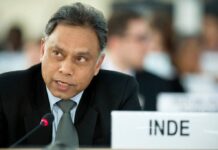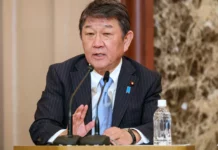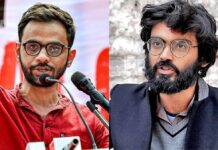NEW DELHI: ASEAN is central to India’s ‘Act East’ policy and the ties with the grouping are a source of balance and harmony in the region, Minister of State for External Affairs V Muraleedharan has said.
The youth in India and ASEAN countries are vulnerable to the socio-economic disruptions caused by coronavirus, but being “vehicles of change”, they are in an ideal position to deal with the challenges thrown up by the pandemic, he said addressing the valedictory session of ASEAN-India Youth Dialogue.
He said the India-ASEAN relationship has gone well beyond its economic and even cultural dimensions.
ASEAN is central to India’s ‘Act East’ policy and their ties are a source of balance and harmony in the region, Muraleedharan said.
“We meet at a time of multiple global challenges: pandemic, economic uncertainties, security threats. In this difficult moment, India and ASEAN are two bright spots of optimism,” he said.
“India and ASEAN share the pluralistic nature of our societies, encompassing major religions of the world, and a wealth of diverse cultures. This affinity constitutes a special asset for the further development of our relations,” Muraleedharan said.
India and ASEAN have some of the largest youth populations in the world, he noted.
With about 65 per cent of its population below the age of 35 years, India has the largest number of young people in the world more than 450 million people are in the age group of 15-35 years, Muraleedharan said.
ASEAN region is also witnessing the largest ever population of the young with about 213 million people currently in the age bracket of 15-34 years, he said, adding that this number is poised to grow further and peak at 220 million.
Recognising the important role of education in effectively and constructively channelizing the youthful energy, education and skill development have been identified as the central elements of ASEAN-India strategic partnership, Muraleedharan said.
“The revival and re-establishment of Nalanda University as a seat of learning is a big step in this direction…One of the major achievements on the education front was the launching of 1,000 PhD Fellowships for ASEAN students at our prestigious Indian Institutes of Technology (IITs), last year,” he said.
Asserting that COVID-19 has emerged as the biggest challenge to humanity in the 21st century, Muraleedharan said the “invisible enemy” has infected the people in millions and killed them in hundreds of thousands.
“No part of the world has remained untouched. Both ASEAN and India have also been impacted – ASEAN with more than 100,000 total cases (more than 50,000 active cases) and more than 3000 deaths; and India with more than 270,000 total cases (more than 130,000 active cases) and more than 7,500 deaths so far,” he said.
Muraleedharan asserted that no country can fight the pandemic single-handedly, and a coordinated and cooperative response is the way to go.
“The socio-economic impacts of COVID-19 will last much longer than the pandemic itself. The closures, lockdowns, travel restrictions, social distancing have resulted in slowing down of our economic machinery and loss of jobs and livelihoods. The youth are especially vulnerable to these disruptions,” he said.
“Our youth are also playing a lead role in the fight against the pandemic. In their roles as doctors, nurses, health-workers, researchers, communicators etc, they are playing a crucial role,” Muraleedharan said.
As the most numerous users of social media, young people are instrumental in spreading the right information in a timely manner, he said.
As innovators, they are coming up with useful solutions ranging from contact tracing apps to medical equipment, PPE kits, masks and so on, he said.
Noting that novel challenges thrown up by the pandemic necessitate major changes in our outlook, institutions, procedures and frameworks, he said the youth, as the vehicles of change, are in an ideal position to lead from the front in this fight. PTI







